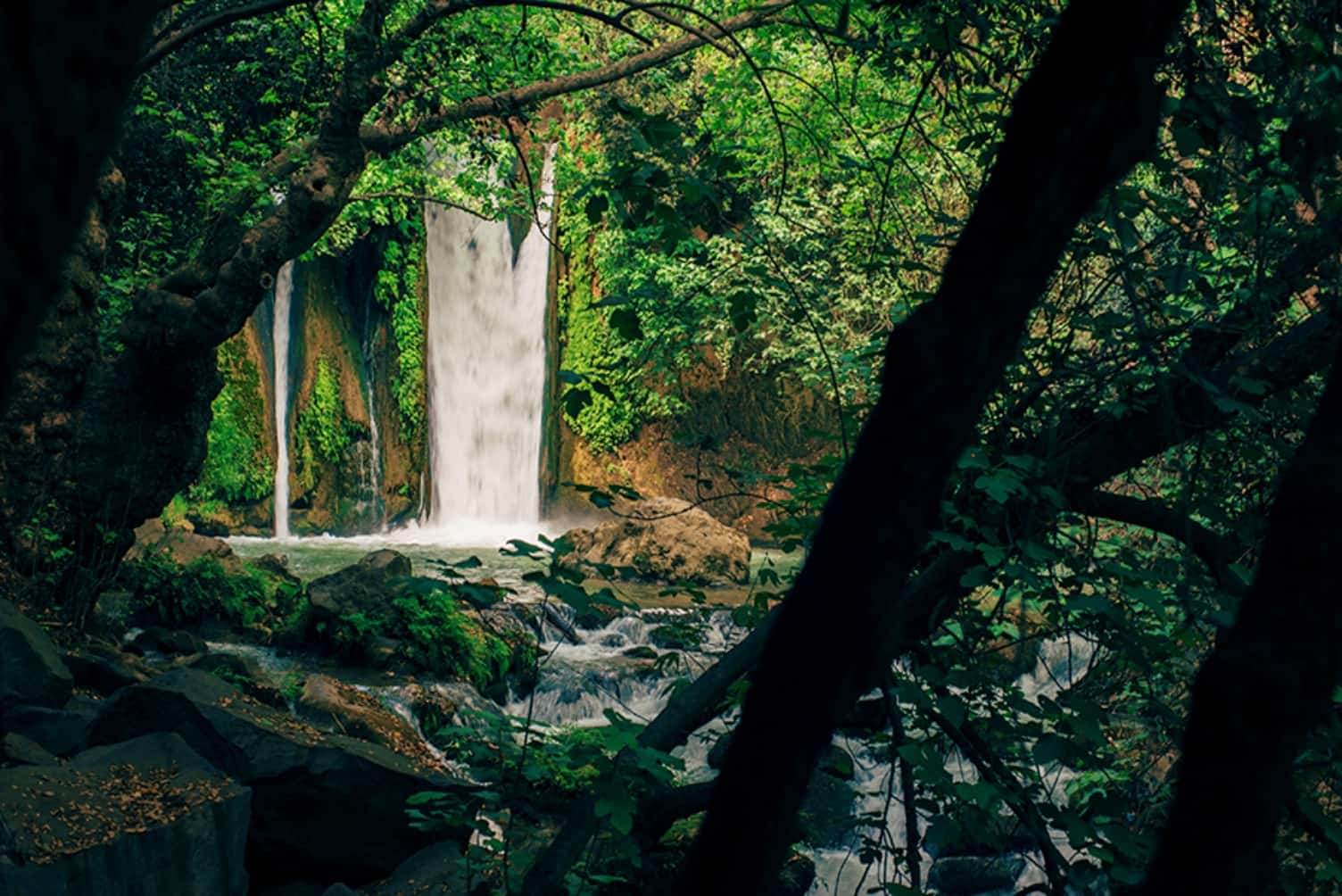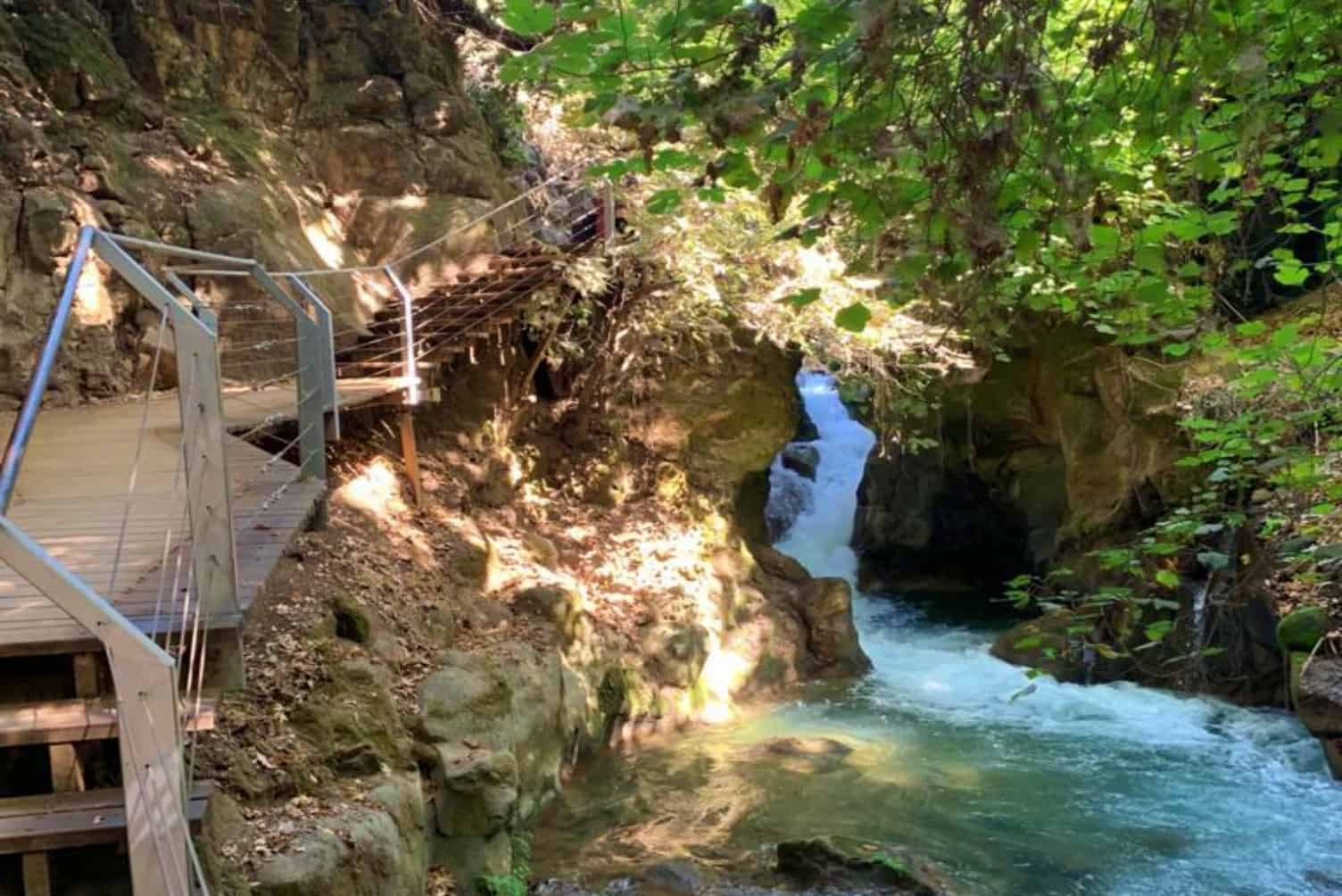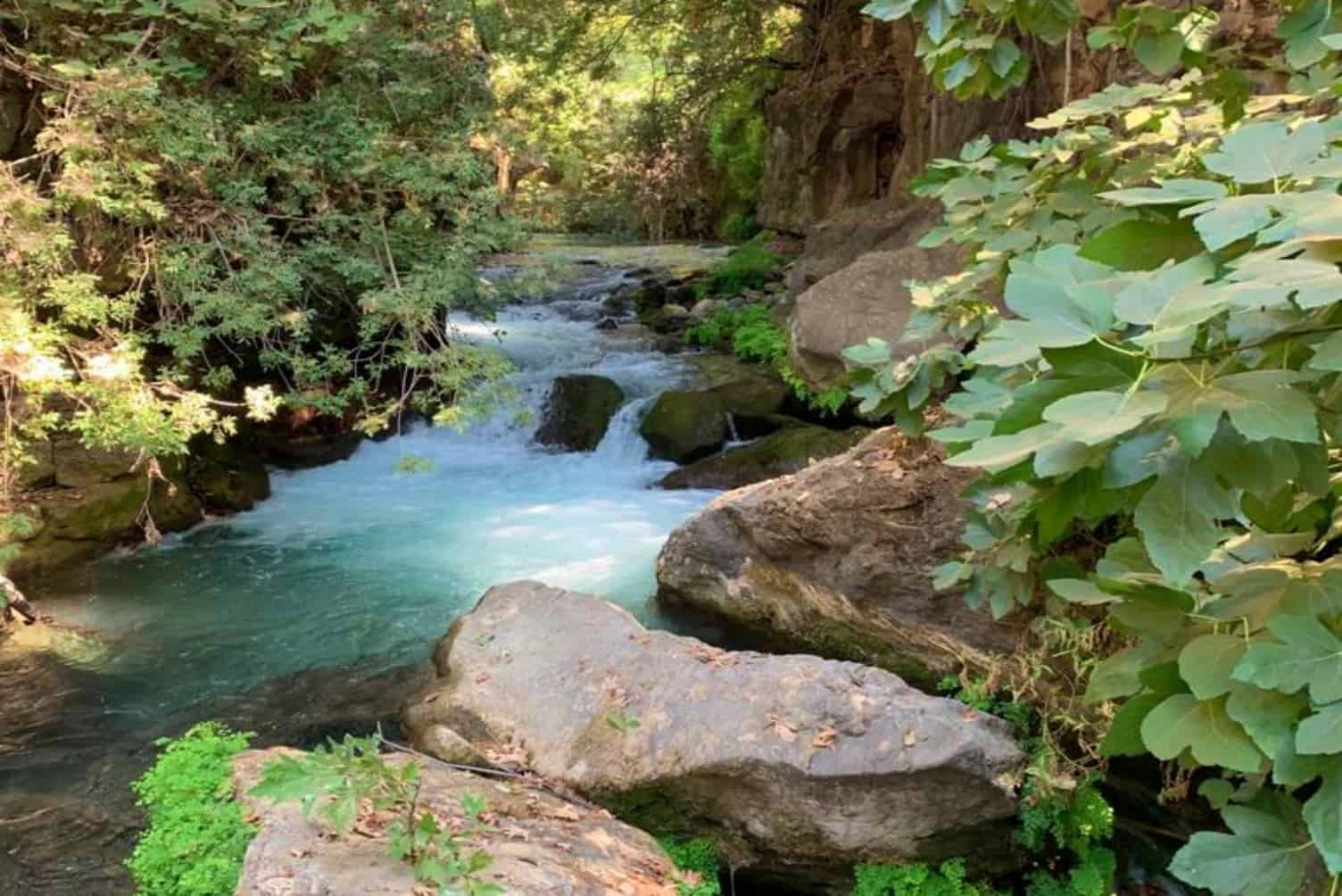The city known as “Paneas” was founded by Phillip, son of King Herod, during the Roman Period (approximately 2,000 years ago). It was named Paneas in honor of Pan, the half-man/half-goat god of shepherds and flocks. Later, local Arabs would pronounce the city name as “Banias”.
We will visit the Cave of Banias, which in the past was the source of the Banias Springs. Today, the river doesn’t run through the cave, but rather in a series of pools below it. Next to the cave are archaeological remains of a series of temples that were built to worship the god Pan, as well as other gods, too. Part of the worship of Pan included throwing wounded animals into the cave; if the animal was swallowed up into the waters, it was a good sign that the gods accepted the sacrifice. But if the animal kept floating on the water, it was a bad sign that the sacrifice was not accepted.
The waters of Banias originate in the melted snow on Mt. Hermon. The Banias River contributes approximately one-fourth of the all the water flowing in the River Jordan (about 125 million square cubes of water).
You can visit the flour mill that was powered by the waters; go inside the building and see the impressive grinding stones, as well as the wheel with “wings” that helped it turn.
You can also ascend to visit the remains of the palace of Agrippa – a Jewish king and ruler of the city 2,000 years ago. The visit takes you to the underground part of the palace that ingeniously used arches and canals for water drainage. You can continue and visit the Crusader section of the ancient city.
In the Christian tradition, Banias has great importance; many Christian pilgrims come to visit here. It was at Banias that Shimon Bar-Yona (also known as Peter), the principal disciple of Jesus, realized that Jesus was the son of God: “You are the Messiah, the living son of God!” And Jesus answered him: “Happy are you, Shimon Bar-Yona, that it wasn’t flesh and blood that told you this, but your father in heaven. And I also tell you that you are Peter, and on this rock I will build my church, and the gates of Hades will not overcome it” (Matthew 16). Shimon’s other name (“Petros” in Greek and “Kefa” in Aramaic) means “rock”, and is taken from this story. Jesus gives Shimon the keys to heaven, thereby appointing him as his successor.
The visit to Banias is circular, but it’s also possible to continue on a hike to the Banias Waterfall and “The Suspended Bridge” (an approximately 2-hour walk). Another option is to visit each reserve separately (paying for one reserve allows you entrance to the other, at no extra charge).
The Banias Reserve is shaded and suitable for a visit even on hot days. At the site there are picnic tables, bathrooms, and a store.
There is an entrance fee; please check the Nature & Parks Authority’s website for updated opening hours.
Rules for Visiting/Safety:
It is strictly forbidden – especially in the Golan – to climb or cross fences or to leave the marked trail path; there are nearby minefields.
Do not enter IDF firing zones that are used for training!
If you see a cattle gate, you may cross through it; please close the gate behind you! Do not climb or cut fences or barbed wire.
Be extremely careful when crossing streets or when walking on roads.
Overnight camping is allowed only at designated campsites! Do not camp overnight in the middle of a path, or in unauthorized areas.
Do not burn toilet paper. Do not light campfires under trees. Do not leave campfires unattended!
Make sure you take out your trash as you exit, and leave nature clean of garbage!
Thank You.














Link to Website/Facebook Page